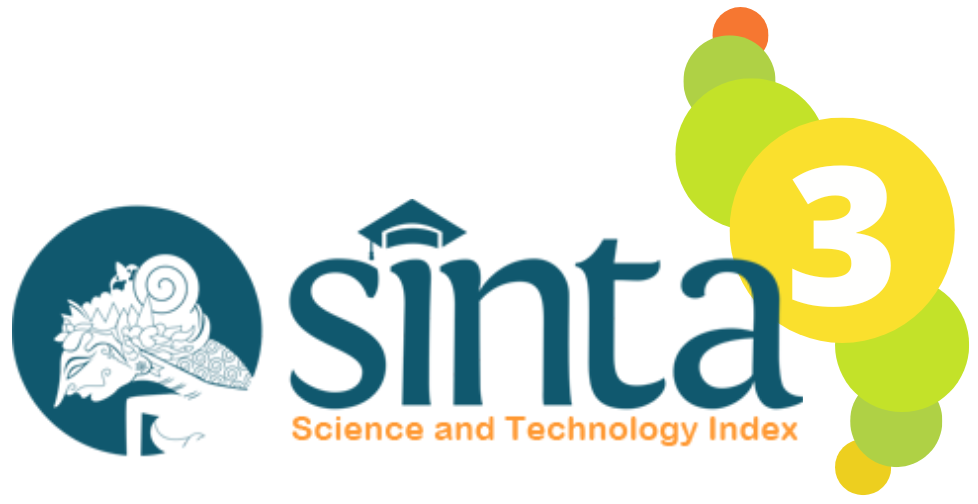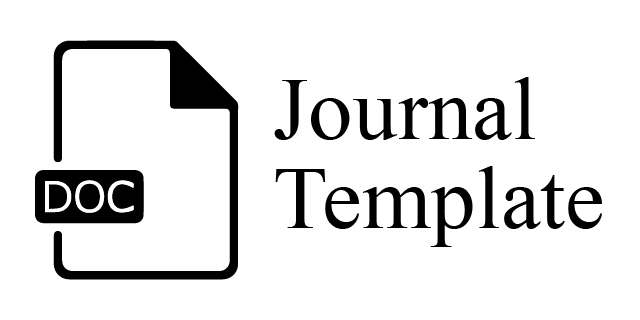Pengaruh Biochar Sekam Padi dan Pupuk Organik Cair terhadap Pertumbuhan dan Hasil Tanaman Kedelai pada Entisol
DOI:
https://doi.org/10.24853/jat.9.1.1-7Keywords:
Legum, arang, organik farmingAbstract
Entisol berstruktur tanah lempung dengan bahan organik rendah. Pemberian bahan organik penting dilakukan dengan pemberian biochar dan pupuk organic cair. Penelitian bertujuan mempelajari pengaruh pemberian biochar sekam padi dan POC terhadap pertumbuhan dan hasil tanaman kedelai di entisol. Penelitian dilaksanakan di Malang pada Maret - Juli 2020. Penelitian menggunakan Rancangan Acak Kelompok faktorial dua faktor dan tiga ulangan. Faktor 1 adalah dosis biochar sekam padi (B) terdiri atas 3 taraf yaitu: B0= 0 t/ha (kontrol), B1= 10 t ha-1 (80 g tan-1), B2= 15 t ha-1 (120g tan-1) dan faktor 2 adalah POC NASA terdiri atas P0= 0 cc L-1 (kontrol), P1= 20 cc L-1, P2 = 40 cc L-1. Pengamatan meliputi tinggi tanaman, jumlah daun, bobot basah brangkasan, jumlah bintil akar, jumlah polong pertanaman, bobot biji pertanaman, bobot 100 biji dan hasil panen. Data dianalisis anova jika nyata dilanjutkan uji Beda Nyata Terkecil taraf 5%. Hasil penelitian menunjukan (1) Terdapat interaksi nyata dosis biochar dan dosis POC pada parameter bobot basah brangkasan tanaman. (2) Hasil kedelai terbaik terdapat pada dosis 10 ton ha-1, dilihat dari parameter pengamatan tinggi tanaman, jumlah bintil akar dan jumlah polong pertanaman sedangkan pemberian pupuk organik cair belum mampu meningkatkan pertumbuhan dan hasil tanaman kedelai.ABSTRACTEntisol has a clay soil structure with low organic matter. It is important to provide organic material by providing biochar and liquid organic fertilizer. The research aims to study the effect of providing rice husk biochar and POC on the growth and yield of soybean plants in entisol. The research was conducted in Malang in March - July 2020. The research used a factorial randomized block design of two factors and three replications. Factor 1 is the dosage of rice husk biochar (B) consisting of 3 levels, namely: B0= control, B1= 10 t ha-1 (80 g ton-1), B2= 15 t ha-1 (120g tan-1) and factor 2 is NASA POC concentration consisting of P0= 0 cc L-1 (control), P1= 20 cc L-1, P2 = 40 cc L-1. Observations included plant height, number of leaves, fresh weight of stover, number of root nodules, number of pods planted, weight of seeds planted, weight of 100 seeds and harvest yield. The data was analyzed by ANOVA if it was real, followed by the Least Significant Difference test at the 5% level. The research results show (1) There is a real interaction between biochar dose and POC dose on the wet weight parameters of plant stover. (2) The best soybean yield was found at a dose of 10 tons ha-1, seen from the observation parameters of plant height, number of root nodules and number of pods planted, while the application of liquid organic fertilizer was not able to increase the growth and yield of soybean plants.References
Adawiyah, D. R., Andarwulan, N., TrianaR, N., Agustin, D., dan Gitapratiwi, D. (2018). Evaluasi Perbedaan Varietas Kacang Kedelai terhadap Mutu Produk Susu Kedelai. Jurnal Mutu Pangan : Indonesian Journal of Food Quality, 5(1), 10–16. https://journal.ipb.ac.id/index.php/jmpi/article/view/27871
Afandi, F. N., Siswanto, B., dan Nuraini, Y. (2015). Pengaruh pemberian berbagai jenis bahan organik terhadap sifat kimia tanah pada pertumbuhan dan produksi tanaman ubi jalar di entisol Ngrangkah Pawon, Kediri. Jurnal Tanah dan Sumberdaya Lahan, 2(2), 237–244.
Annur, C. M. (2022). Nilai Impor Kedelai Indonesia Naik Jadi US$ 1,48 Juta pada 2021. databoks.katadata.co.id.
Biederman, L. A., Phelps, J., Ross, B. J., Polzin, M., dan Harpole, W. S. (2017). Biochar and manure alter few aspects of prairie development: A field test. Agriculture, ecosystems & environment, 236, 78–87.
Farhangi-Abriz, S., dan Torabian, S. (2018). Biochar improved nodulation and nitrogen metabolism of soybean under salt stress. Symbiosis, 74, 215–223.
Gul, S., dan Whalen, J. K. (2016). Biochemical cycling of nitrogen and phosphorus in biochar-amended soils. Soil Biology and Biochemistry, 103, 1–15.
Kätterer, T., Roobroeck, D., Andrén, O., Kimutai, G., Karltun, E., Kirchmann, H., Nyberg, G., Vanlauwe, B., dan Nowina, K. R. de. (2019). Biochar addition persistently increased soil fertility and yields in maize-soybean rotations over 10 years in sub-humid regions of Kenya. Field Crops Research, 235, 18–26.
Kementan. (2021). Rencana Strategis (Renstra) Pusat Perpustkaan dan Penyebaran Pertanian (PUSTAKA) Tahun 2020-2024.
Lehmann, J., Gaunt, J., dan Rondon, M. (2006). Bio-char sequestration in terrestrial ecosystems–a review. Mitigation and adaptation strategies for global change, 11, 403–427.
Liu, Q., Zhang, Y., Liu, B., Amonette, J. E., Lin, Z., Liu, G., Ambus, P., dan Xie, Z. (2018). How does biochar influence soil N cycle? A meta-analysis. Plant and soil, 426, 211–225.
Mawardiana, M., Sufardi, S., dan Husen, E. (2013). Pengaruh residu biochar dan pemupukan NPK terhadap dinamika nitrogen, sifat kimia tanah dan hasil tanaman padi (Oryza sativa L.) musim tanam ketiga. Jurnal Manajemen Sumberdaya Lahan, 2(3), 255–260.
Nurida, N. L., Sutono, S., dan Muchtar, M. (2017). Pemanfaatan biochar kulit buah kakao dan sekam padi untuk meningkatkan produktivitas padi sawah di Ultisol Lampung. Jurnal Pengkajian dan Pengembangan Teknologi Pertanian, 20(1), 69–80.
Riduan, A., dan Junedi, H. (2024). Pengaruh Biochar Sekam Padi dan Pupuk Kandang Kotoran Ayam Terhadap Kesuburan Ultisol dan Hasil Kacang Tanah (Arachis hypogea L.). Jurnal Media Pertanian, 9(1), 29–38.
Rostaliana, P., Prawito, P., dan Turmudi, E. (2012). Pemanfaatan biochar untuk perbaikan kualitas tanah dengan indikator tanaman jagung hibrida dan padi gogo pada system lahan tebang dan bakar. Naturalis-Jurnal Penelitian Sumberdaya Alam dan Lingkungan, 1(3), 179–188.
Sari, D. K., Hasanah, Y., dan Simanungkalit, T. (2013). Respons pertumbuhan dan produksi beberapa varietas kedelai (Glycine max L.(Merill)) dengan pemberian pupuk organik cair. Jurnal Online Agroekoteknologi, 6597.
Scheifele, M., Hobi, A., Buegger, F., Gattinger, A., Schulin, R., Boller, T., dan Mäder, P. (2017). Impact of pyrochar and hydrochar on soybean (Glycine max L.) root nodulation and biological nitrogen fixation. Journal of Plant Nutrition and Soil Science, 180(2), 199–211.
Tambunan, S., Handayanto, E., dan Siswanto, B. (2014). Pengaruh aplikasi bahan organik segar dan biochar terhadap ketersediaan P dalam tanah di lahan kering Malang Selatan. Jurnal Tanah dan Sumberdaya Lahan, 1(1), 89–98.
Widowati, S., Karamina, H., dan Fikrinda, W. (2020). Soil amendment impact to soil organic matter and physical properties on the three soil types after second corn cultivation. AIMS Agric Food, 5(1), 150–168.
Widowati, W., Asnah, A., dan Sutoyo, S. (2012). Pengaruh penggunaan biochar dan pupuk kalium terhadap pencucian dan serapan kalium pada tanaman jagung. Buana Sains, 12(1), 83–90.
Yooyen, J., Wijitkosum, S., dan Sriburi, T. (2015). Increasing yield of soybean by adding biochar. Journal of Environmental Research and Development, 9(4), 1066.
Yu, L., Yu, M., Lu, X., Tang, C., Liu, X., Brookes, P. C., dan Xu, J. (2018). Combined application of biochar and nitrogen fertilizer benefits nitrogen retention in the rhizosphere of soybean by increasing microbial biomass but not altering microbial community structure. Science of the Total Environment, 640, 1221–1230.
Zaevi, B., Napitupulu, M., dan Astuti, P. (2014). Respon tanaman kacang panjang (Vigna sinensis L.) terhadap pemberian pupuk NPK pelangi dan pupuk organik cair Nasa. Agrifor: Jurnal Ilmu Pertanian Dan Kehutanan, 13(1), 19–32.
Zhu, Q., Kong, L., Shan, Y., Yao, X., Zhang, H., Xie, F., dan Ao, X. (2019). Effect of biochar on grain yield and leaf photosynthetic physiology of soybean cultivars with different phosphorus efficiencies. Journal of Integrative Agriculture, 18(10), 2242–2254.











